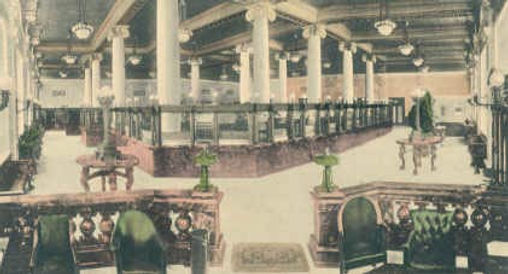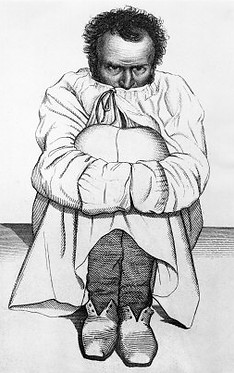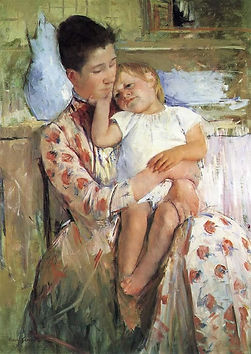William Henri Colchester Mollett The children

William Henri Colchester Mollett +
Caroline Margaret Smith
There were ten children born to Caroline and her husband. It was a fecund age, but infant mortality was high too, and the Molletts were not immune to this, in spite of their relative prosperity. Here is what I know about them all - not very much really - births, census, marriage, number of children, death ... There are inevitable gaps, so if you know anything more I would love to hear from you. Contact us by sending an email.
The photograph above is of John Murray a noted Victorian theologian. I chose the photograph because the numbers are right, if you omit one of the adults and replace them with a child. I haven't got the boy/girl balance right though - too many girls here. Anyway - you get the picture - a big family.
My new found cousin Philip is Wilfred John’s grandson, so I am hoping to find out more about Wilfred. In the meantime this is what I have discovered myself. Baptised at St. Mary Magdalene, Richmond on 16th June 1872, the first born child and a son too, so his birth would have been celebrated. He lived at home with his parents, even staying there after his marriage in 1902. I guess he sort of took on the role of head of household after his father’s death. I do not know where he went to school, but assume that it was somewhere local in Camberwell where he spent most of his childhood. At the age of 18 he was a Secretary’s clerk, and by the age of 29 had risen to the giddy heights of being a newspaper accountant. As his father was an accountant, it was not at all surprising that he should follow him into that profession. He married Grace Adelaide Archer in 1902. His father died the year after his marriage and it is he who registers the death, giving his address as the parental home in Therapia Road. Whether he was just there temporarily giving support or whether he was still living there I do not know. He does seem to have taken his responsibilities as the oldest son seriously though, as he acts as executor on his brother Gerald’s will and his mother’s as well. Wilfred and Grace had at least four children, Grace Ellen Margaret (1902-1986), Wilfred John Henri (1905), Arthur Roland (1910) and Philip’s father Harold E. L. (1916), about whom I hope to hear more some day too. I am sure there were more. It seems that he and Frederick had a falling out over Caroline’s will - but read that page for more on that. Wilfred died in Ealing in 1955 at the good old age of 83.


Wilfred John 1872-1955

Frederick Lewis 1873-1939

The boys just kept on coming. Harold seems to have been a little smarter than his brother Frederick. Although still unmarried at the age of 26 in 1901, when he is still at home with mum, he is working as the manager of an estate office - real estate I assume. So another, but different, white collar career. But there the trail goes completely cold. I have nothing further on Harold - no marriage, no death, nothing. So did he go overseas? There is a tantalising entry on a 1906 incoming passenger list from South Africa, which could be H. J. Mollett (but it could also be A.J.).
However, recently we have been presented with more information. The first is that he participated in the Boer War (it would have been the second Boer War), although we have not found any records in Findmypast’s database. The photograph above from Philip Mollett's collection purports to be of Harold in the Boer War, but which is he? The third on the left in the top row looks a bit like the intriguing looking son at the bottom of the group portrait of William Henri and his sons. Then, even more intriguingly it seems he took off with a major chunk of Caroline’s money to Malaysia or India, rubber planting and is also said to have taken up with a native woman. Again, we can find no marriage in the overseas marriages database - but then he may not have married her. We cannot find anything else, so at the moment it is just a very tantalising family legend.
Frederick also seemed to have played a big brother kind of role. When there were executors or witnesses needed, he and Wilfred were the two who were called upon. I have found at least two more wills for which he was executor. He married a couple of years before his big brother however, and moved out of home with his bride Ethel May Gillott. Before his marriage he was a bank clerk, and by 1901 had risen to a bank cashier. It does not seem that he rose much higher, because the notice in The London Gazette announcing his will, describes him as a bank clerk. He and Ellen had at least four children - Winifred Sarah (1900), Margery (1904), Raymond Harold L. (1906), Nancy I. (1913). Considering the gaps, particularly between the last two, it is likely there were more - though maybe Nancy was a surprise package. Not much to say really, except perhaps, to ask why did he never go beyond being a bank clerk?
Harold John 1875-?

The 1891 census described Arthur as ‘imbecile from childhood’. The photograph above left is clearly labelled Arthur Mollett but he looks far too with it to be an 'imbecile from childhood.' The man in the photo is also far too old, as Arthur was only 27 when he died. So a mistake I think.
Aged 5 in the 1881 census he was living at home and simply described as a scholar, but by the next census he was boarding with one Robert Jarvis and his wife - lunatic attendants, in Russell Road, Camberwell - not too far from the parental home. His name is also given as Barney (is this a euphemism for barmy?). But obviously even this became too difficult because by 1901 he is living in the City of London Lunatic Asylum in Dartford. The engraving on the right shows the huge complex, which, apparently is about to be converted into luxury apartments. The hospital was initially set up for pauper patients, but from 1892 private patients were admitted, so I do not know in which category Arthur fitted. Without trying to find his hospital record it is also impossible to know what ailed him. I am guessing Down’s Syndrome, but it could, of course, have been anything really. Whatever it was it must have been traumatic for the family, and even more traumatic for him.
That said, I think that this is the age in which treatment for the insane began to change. Dartford Hospital, like many, was a huge establishment, with hundreds of acres of grounds including a farm. The following from James Greenwood’s 1889 Odd People in Odd Places is a contemporary account:
“I sauntered about in the midst of that happy family of madmen - numbering a couple of hundred or more - who were enjoying the fresh air and sunshine, and the various healthful amusements provided for them in the extensive pleasure grounds attached to one of our national asylums for the insane. It is a vast establishment, and its boundary walls shut in from the outer world more than two thousand men and women; every one of whom, were he or she to commit the gravest crime, would be held irresponsible for it. The male inmates were not all of them disporting in the garden: some were at work there and in the vegetable-growing department, digging, weeding, planting, manfully hard at it in their shirtsleeves; some lightening their labour with a pipe of tobacco, some whistling as they worked or humming the tune of a popular ditty, and one and all seemingly as free from care as though in the ordinary pursuits of life they had amassed something of a competency and had retired hither, their present employment being their pleasurable pastime.”
It sounds idyllic, which I’m sure it wasn’t. I gather the main way of treating the insane was confinement and restraint, so I guess, if you weren’t dangerous then as long as you couldn’t get out, you could make yourself useful. Greenwood goes on to talk about workshops such as one where clothes were made. Let us hope that Arthur lived a happy if mindless existence here and not a cruel, and frightening one as the patient in the picture at the top seems to have. He died in 1903 at the age of 27.
Arthur Leonard 1876-1903


At last a girl!
In 1903 at the age of 25 Margarette, Caroline’s first daughter, was married to Robert James Hackshaw, a clerk, later a Company Secretary. Her birth in 1878 must have been welcomed after the trauma of Arthur’s condition and three sons in a row, though little did Caroline know that with the exception of my grandfather, the rest of her six more children would all be girls. Which must have changed the ambience of the household somewhat. Any mother would welcome a daughter after three sons I think, though she may have had enough of them by the end! No doubt Margarette, as the oldest, was a help to her mother, and she did live with her right up to her marriage, at which Caroline was a witness. Her father was ailing at this time as well, so her marriage would have been a bright moment in a bad year. Both Arthur and William Henri died later in the year. Initially the couple lived nearby, and there were three children that I could find, Robert Harry Colchester (1904), Elizabeth Joan (1905) Bertha Noelle (1908) and Ursula M. (1915). The seven year gap between Bertha and Ursula, implies to me that there were several children in between, but I have not researched this further. The 1911 census states that her husband is a Company Secretary to a Public Company associated with the railways - a civil Servant I think from a couple of entries in the London Gazette. So solidly ordinary I guess. I do not know when she died.
Margarette Jane May 1878-?

Elsie Fanny 1879-1974


Now that I have a transcript of the 1911 census I know that Elsie actually went out to work - a revolutionary thing for a family such as this I guess. Was it financial necessity, or simply a desire to get out there and do something? Either way, it was a small step, because she is listed as a clerk typist. Still it is different to what previous women in her situation would have done. If money was required I guess they would have previously been governesses, or ladies companions.
I knew my great-aunt Elsie. She was one of the two great-aunts that we used to visit as children. And there they are outside their home in Dulwich. I remember her as a kindly lady, but I obviously knew nothing about her, as I think I assumed that she was unmarried. Not so - she married John W. Hey in 1914 - the year World War One began, and they had a child, Gerald in 1915 - and now that I start to think about those visits I do remember her mentioning a Gerald. The photo above is of her and her baby. There do not seem to be any more children although they seem to have been married for some time as electoral registers show them still living in the Belvoir Road house as late as 1932. He must have died by the time I visited though. Whatever happened it must have been tragic for Elsie. Her son Gerald certainly lived to old age, though I never knew him. I wonder why, as I am sure my father must have known him. I wonder, too, whether he was named after my grandfather, Elsie’s brother. Elsie herself lived in Belvoir Road for many, many years with her sister Jessie, but she must have moved at some time, for she died in Haringey in 1974. Now that I am old, I feel guilty that we did not keep in touch with her.
Gerald Osmond Hubert 1882-1917


Jessie Kathleen Gertrude 1884-1962
My great-aunt Jessie, known to us as Auntie Jerry, was the other great-aunt we knew and visited. She was slightly more daunting than Auntie Elsie, but really, when I think of her now, I do not know why this should be so. Why Jerry, rather than Jessie I wonder? Was this yet another homage to my grandfather, Gerald? He was born between Elsie and Jessie, and in the middle of all those girls, so I am sure he must have been spoilt rotten. Jessie never married. Did she ever come close to marriage I wonder? Did nobody ever ask, or did she not want to marry? In 1911, whilst her other two unmarried sisters were out working, she was not. But then, probably somebody was required to stay at home and look after their mother who was now in her sixties, and also, it seems, they had begun taking in lodgers. Later they moved to Belvoir Road which I remember as being dark and cluttered and they had a parrot. Auntie Jerry used a magnifying glass to read with. These are the things a small girl remembers. My father sometimes said that they had brought him up. Although now I'm not sure about this. I wonder why we stopped visiting, because they both lived into my adulthood? Auntie Jerry died in 1962, we think after an accident involving a motorbike.
Caroline was very unkind to her in her will, but as a mother with the small baby Jessie above, she looks delighted.

Winifred Mildred 1886-1886
Winifred died as a baby. The baptism was a private one, which, I think implies that the parents thought that she was unlikely to live. So a late tragedy, just when one might have been forgiven for thinking that childbirth had been mastered.
Dorothy Mildred 1888-1930

And you would be forgiven for giving up having children after that shock, but Caroline and William Henri gave it one more go. Another girl, and they obviously liked the name Mildred. Dorothy was also at home in 1911, and also out working, as a stenographer (which to my mind is the same as clerk typist, but maybe not.) She finally married at the age of 38 and to a younger man to boot - Edward Albert Poet was six years younger than she which is interesting. Maybe he was a survivor of WW1 and she cared for him. I do not know who he was or what he did, but do know that they had one child, Anne in 1928. Dorothy would have been quite old to be a first-time mother (40) - very old for those days, so I am sure it must have been an overwhelming experience for her. Tragically, she died a couple of years later, in Tamworth in Staffordshire. Did she die trying to have another child I wonder? I cannot find another child. So the baby of the family was one of the first to die. Let us hope that she had a few happy years before then after all the years of living at home with mother.